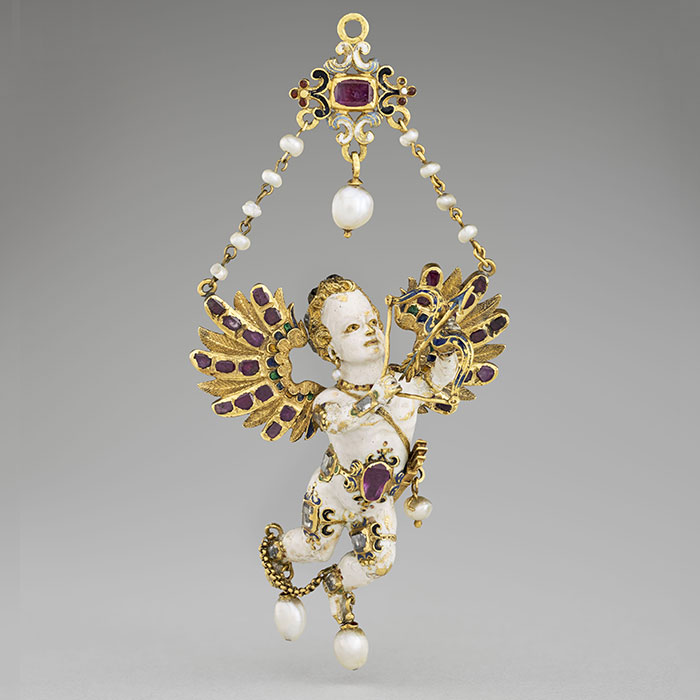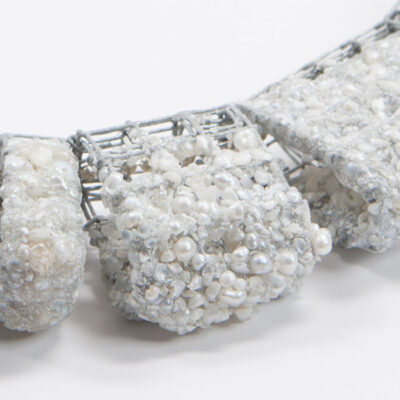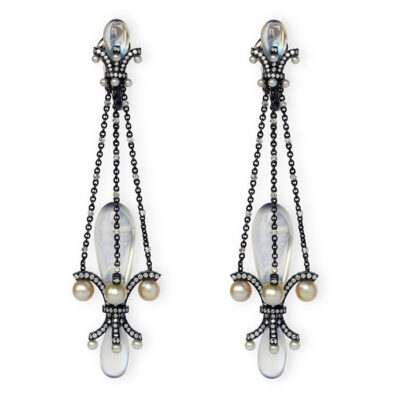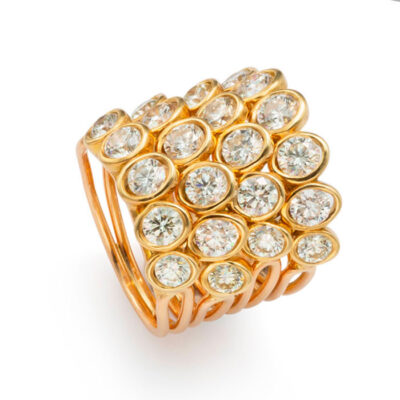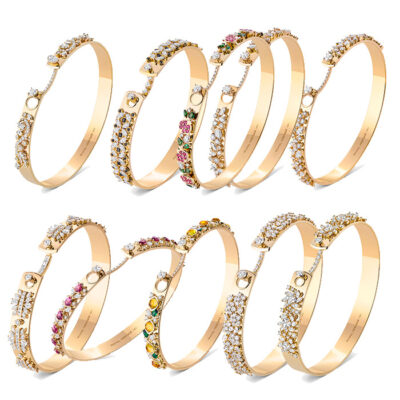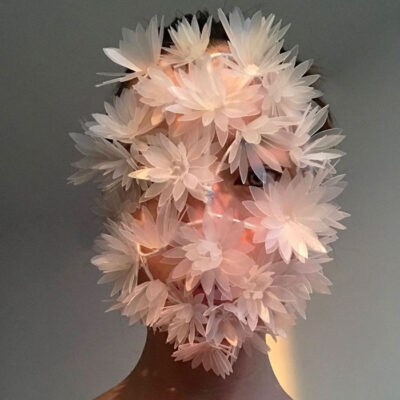Style
03 June 2025
Share
Cupid pendants, iconic Renaissance jewelry, explained by Julie Rohou
The exhibition “D’or et d’éclat” at the Bemberg Foundation (Toulouse) showcases Renaissance jewelry. Three Cupid pendants have been brought together for the first time thanks to curator Julie Rohou, who is also curator at the National Renaissance Museum (Écouen), who is responsible for the gold and silverware and jewelry collections. She tells us more about these Amours, which were probably commissioned for weddings.
Sandrine Merle. A few months ago, during our interview for La Gazette Drouot, you mentioned a collection of Cupid-shaped pendants. Now it’s complete, and visitors are lucky enough to be able to admire three of the ten pieces that make up the collection.
Julie Rohou. The ones on display here come from the collections of the Renaissance Museum in Ecouen, the Budapest Museum, and the Rijksmuseum in Amsterdam. My ultimate goal is to one day bring together all ten pieces, the tenth having appeared very suddenly at the end of 2024 on the Instagram account of a London gallery owner. Some are in private collections such as Albion Art. Others will be difficult to move, such as the two kept in Russia at the Hermitage Museum and the one sewn onto the dress of the Black Madonna kept at the Jasna Góra convent in Poland.
Sandrine Merle. These three cupids, measuring around ten centimeters high, are distinguished by their preciousness, the finesse of their execution, and their striking resemblance. Are they all in such perfect condition? Have some been modified over time?
Julie Rohou. Enamelled in the round, they are all wearing a small crown with a bow paved with precious stones, pointing in the same direction. Perhaps towards the heart… There are a few individual characteristics, differences in size and decoration on the necklace, the laurel wreath, and the enameling of the wings. The one from Ecouen is the only one to have a vertically oriented hanging system, which was not the case originally. The chain that ran from its head to its foot (where the trace of the cut ring remains) was probably replaced in the 19th century. At that time, the bow, which was probably broken, was also replaced. Overall, those preserved in historical collections are in excellent condition; I have not yet seen the one discovered on Instagram, but it appears to be damaged.
Sandrine Merle. These Cupid pendants were particularly in fashion between 1580 and 1610. How do they represent that period?
Julie Rohou. They represent the last gasps of the Renaissance, a period that celebrated goldwork, enamel and exuberant forms. However, at the time they were made, significant advances were being made in gemstone cutting. Jewelry such as Cupid pendants quickly went out of fashion and were replaced by pieces that showcased the stones more and looked much more like the jewelry we know today.
Sandrine Merle. Do we have any idea who made them and who wore them?
Julie Rohou. Their origin is difficult to pinpoint due to the movement of goldsmiths and designs throughout Europe in the second half of the 16th century. This led to a certain standardization of shapes and styles. Another reason is that these pieces of jewelry are never hallmarked, so they cannot be attributed with certainty to specific places of production. We assume that they all come from a small number of workshops in the same geographical area of northern Europe, Germany or the Netherlands, judging by the nationality of most of the owners of the jewelry identified in the archives. One is depicted in the portrait of Maria Elizabetha Fugger (a prominent German banking family) painted by Wolfgang Kilian (1618).
Sandrine Merle. You say that at that time, they were almost “mass-produced” in certain workshops, and you seem to have a very clear idea of how they were designed.
Julie Rohou. That’s right, because some of these Cupid pendants underwent a series of tests. We know that the Cupids from Écouen and the Rijksmuseum were cast in two parts, a bit like two shells, and then assembled; their interiors are hollow to save metal. Once the general shape was obtained, the goldsmith then reworked certain parts, such as the hair, and then enamelled the rest. Finally, the stones were set by placing a resin at the bottom of the slot intended to hold them, then a paillon, and finally the stone itself. The pearls were added at the end. The enamel did not need to be polished: firing gave it a natural luster and a shiny, smooth surface. It is the analysis of this material that often distinguishes Renaissance jewelry from its many imitations made in the 19th century. It’s impossible to see with the naked eye, but the Budapest pendant is extremely heavy: I suspect it is filled with the cement that allowed the sculptor to shape it.
Sandrine Merle. Are you planning to publish a book or article about these pendant Amours?
Julie Rohou. That’s entirely possible. My colleague Suzanne van Leeuwen from the Rijksmuseum and I believe that the exhibition is a first step toward taking a technical look at these objects.
Image en bannière : © Albion Art Collection
“D’or et d’éclat” at the Bemberg Foundation (Toulouse) until July 27, 2025
Related article:


